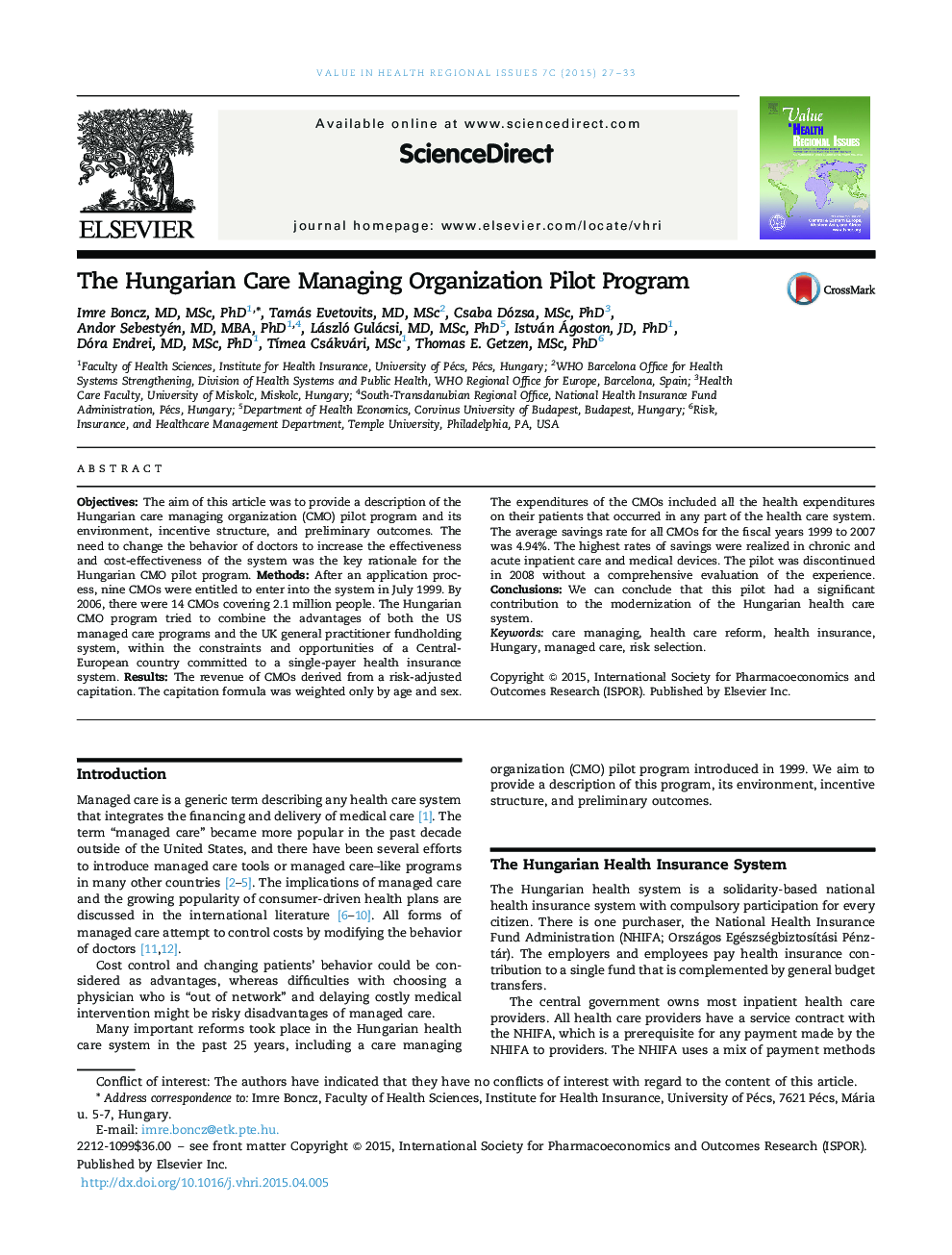| Article ID | Journal | Published Year | Pages | File Type |
|---|---|---|---|---|
| 990090 | Value in Health Regional Issues | 2015 | 7 Pages |
ObjectivesThe aim of this article was to provide a description of the Hungarian care managing organization (CMO) pilot program and its environment, incentive structure, and preliminary outcomes. The need to change the behavior of doctors to increase the effectiveness and cost-effectiveness of the system was the key rationale for the Hungarian CMO pilot program.MethodsAfter an application process, nine CMOs were entitled to enter into the system in July 1999. By 2006, there were 14 CMOs covering 2.1 million people. The Hungarian CMO program tried to combine the advantages of both the US managed care programs and the UK general practitioner fundholding system, within the constraints and opportunities of a Central-European country committed to a single-payer health insurance system.ResultsThe revenue of CMOs derived from a risk-adjusted capitation. The capitation formula was weighted only by age and sex. The expenditures of the CMOs included all the health expenditures on their patients that occurred in any part of the health care system. The average savings rate for all CMOs for the fiscal years 1999 to 2007 was 4.94%. The highest rates of savings were realized in chronic and acute inpatient care and medical devices. The pilot was discontinued in 2008 without a comprehensive evaluation of the experience.ConclusionsWe can conclude that this pilot had a significant contribution to the modernization of the Hungarian health care system.
